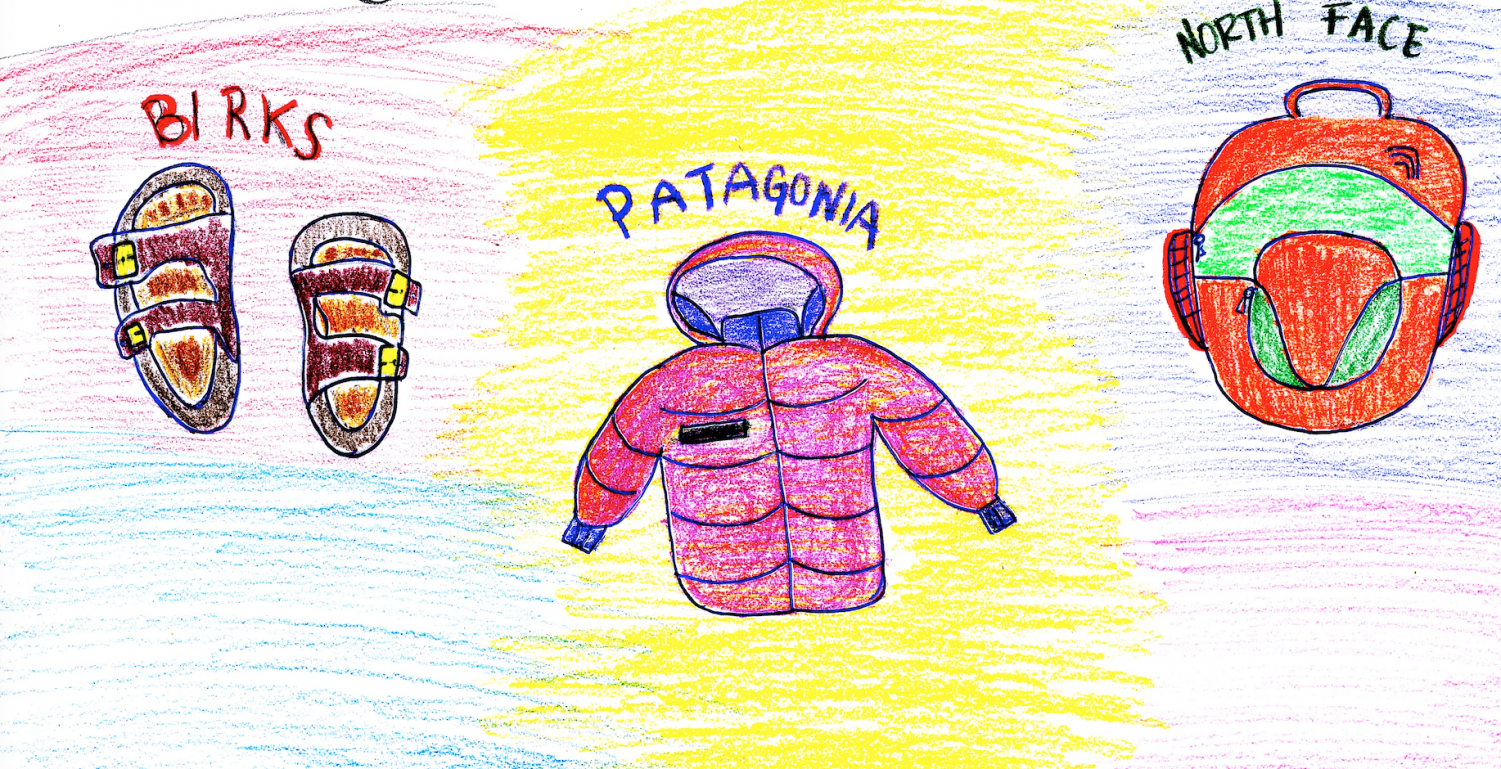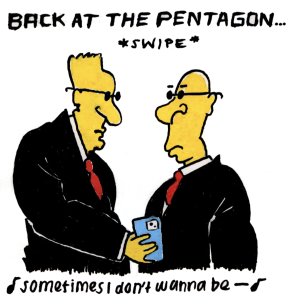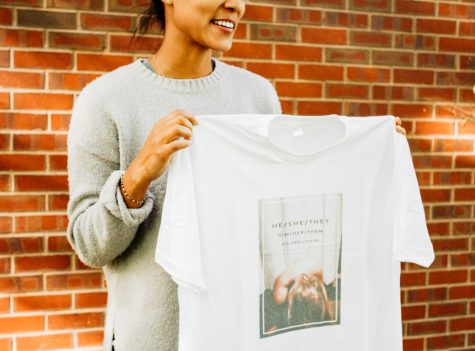A Passion for Fashion: Style at Whitman
May 3, 2019
In the morning as Whitman students wake and get ready for class we all have a seemingly simple decision to make in common: what clothes to put on our back. Admittedly for me this decision is often fueled by convenience: whatever shirt I pull out of my drawer first or what pair of jeans are the most comfortable is what I wear. For some their look for the day is a means of expression, others comfort or convenience. No matter the preferences or taste, a person’s outfit can tell you a lot about them.
When asked many people describe the Whitman community to have a more relaxed or outdoorsy style. Elle Pollock, a Whitman junior, describes this aesthetic as “crunchy” or “granola.” However, the image of a plaid shirt, Patagonia wearing climber is an over simplified version of the many individual styles that Whitman students have. A walk around campus will show you a lot of casual outdoor focused styles, but a closer look will reveal many unique and expressive aesthetics.
To get a better look into fashion at Whitman, a topic that is often overlooked or even somewhat stigmatized, I spoke to three Whitman students about the way they dress each day: their inspirations, motivations, and routines.

Coming to Whitman as a Freshman, Elle Pollock who had already developed a love for fashion and styling outfits, felt a pressure to conform to the norms she saw around her. A joke that often circulates campus is that every Whitman student owns a pair of Chacos, Birkenstocks and Blundstones, and when looking around campus this can often feel true. Elle describes her aesthetic as feminine, classy, and timeless and felt that a lot of these outdoor inspired styles did not resonate with her.
“My first year here I definitely tried to embrace the, I definitely bought a pair of Chacos and tried to get into camping and it just didn’t work for me. It just wasn’t something that I felt fit my personality and I wasn’t really comfortable with.” Pollock said.
Having a similar experience, junior Faye Liu, noted that in her first year she was given a lot of “shit for having nice clothes.” She explained that the high end outdoorsy culture that is prevalent at Whitman is something that we as a community should be more cognizant and perhaps even critical of.
“There’s a very specific outdoorsy culture in Whitman in general, and I think even if we are not part of it, we are also inevitably surrounded by and influenced by it” Liu explained. “It’s expensive, mainly people with similar family upbringing socially and economically. I think it’s something we need to press on, because in class we learn so much about ‘differences,’ ‘otherness,’ but in practicality, there are so many things go right off our sights and minds. Let’s talk about it and critique it!”
Soon finding that conforming to the trends she saw around her was the opposite of what she wanted to do, Elle began to develop a sense of comfortability in her own style.
“Especially this semester I’ve tried to not think so much about the culture and not feel so weird about dressing up so much and have kind of just gone with whatever’s inspiring me lately” she said.
Liu too has noticed that since her Freshman year when she felt a pressure to dress in a certain way or to be “rebellious,” her style has begun to form into something that is specifically “Faye.”
“Since my first year in Whitman, my clothes, especially the materials, have become more and more comfortable, but that’s in general it has been consistent” Liu explained. “I was thinking because we have been reading about Foucault’s self-stylization, and I think everyone has this experience, that you look at the mirror and look at the clothes you are wearing, immediately knowing it is “me,” or it is not “me.” I couldn’t remember, but fascinating to think about the origins, and how a kind of style has become specifically “you.” and also recently talking to my friend, I realized that I dress more and more like my mum, a lot of linens and jeans. It’s scary to think back during the years that I tried really hard to be rebellious and not “her,” but it’s nice, kind of warming too, that she is a big part of me and my self-making.”
Although Pollock now feels much more comfortable dressing for herself rather than the norms around her, she has noticed that she draws a lot of inspiration from the people she is living and spending time with. Last year while living with a roommate with a more Bohemian style she noted that her outfits often shifted towards Bohemian, now prompted by a friend with a much more casual style, Elle bought a sweatshirt for the first time.
“It definitely depends on who I’m living with at the time” noted Pollock. “Like sometimes I’ll err towards more casual outfits and sometimes I’ll heir towards more nicer outfits. I’m definitely influenced by the people around me.”
While dressing up in a culture of more casual dress has sometimes been hard for Elle, she believes that it has allowed her to experiment and play with style without the judgements or pressures of others.
“I feel like if I lived on a campus where everyone looked amazing all the time, I would feel more of a pressure to feel competitive about it or abide by certain rules of what to wear or whatever and here I think people are still generally accepting of it and I get compliments sometimes which is fun and its more just me finding my own individual thing. I feel like I probably wouldn’t have as much fun with it if I went to a different school” Pollock explained.
Interning at two fashion oriented companies in Milan while abroad last semester, Elle found herself surrounded by people whose passion for style inspired her daily.
“I’ve always liked fashion, but I think going abroad, like I was in Milan, it’s just a different world. And I liked dressing up before that, but if your surrounded by people who don’t you feel weird leaving the house all dressed up because it’s not how the culture is here” Elle explained. “I was totally immersed in the culture of everyone dressing up every day. So I got really used to it and I really really liked it and I felt more in my element. So once I got back I didn’t think so much about my environment as much as what my mood is of the day and what I feel like wearing.”
While the focus on fashion in Milan was inspiring for Elle, she also was disheartened by the culture which she described as “Devil Wears Prada on steroids.” In the end she chose to quit the internship, but it helped her to have a clearer idea of what sort of companies she would like to work with in the future.
“I was looking for internships for this summer and I was like “oh well I definitely don’t like the culture I’m in now.” There was no passion for it, it was just this hustle to make more money or whatever, so I figured that if I could find a company that was really passionate about what they’re doing, so I kind of figured that if a company is aware of the impact they make sustainably that they would probably take a lot of care into the clothes they make and the design and all the aspects that I really care about, so I decided to research some sustainability companies” she said.
This summer she will be interning at a sustainable fashion company in Nashville, Tennessee and began to focus on a buying clothes and accessories more sustainably.
“I’ve been a lot more conscious of the environmental impacts of fashion because it’s horrible for the environment” Pollock explained. “I’ve been trying to be really conscious about the brands I buy clothing from so for the most part this year, and before that too, I mostly just do Goodwill. I’ve been trying to buy more second hand, but it’s a slow process, you kind of have to teach yourself.”
Not only is shopping second hand environmentally friendly, but can also be a source of unique and inspiring pieces. When asked what advice he had for individuals looking to develop their sense of fashion, senior Brendan Dunlap said that shopping second hand is a great step to take.
“Starting with what you already have is a great option, but my next tip has got to be thrifting” Dunlap explained. “A good 90% of what I own comes directly from Goodwill or Yeehaw Aloha. Most stuff will be trash, but you’ve gotta spend a bit of time searching to strike gold.”
Dunlap explained that it is important to have a base of staple pieces such as t-shirts and well-fitting jeans and from there you can play with statement pieces and accessories. For Dunlap fashion is all about play, he sees fashion as a way to accentuate certain aspects of his personality through his day to day outfits.
“Each time I put an outfit in I have the chance to create myself. Sometimes that means colorful and loud, sometimes playful and fun, sometimes simple and ordinary, sometimes feminine, sometimes masculine. When I’m getting dressed, I have the chance to accentuate the mood I most want to carry with me throughout the day. Some days I want to stand out, others I hope to blend in at all cost” Dunlap said. “In a lot of ways I see clothing as a costume, but not in the sense that I’m “pretending” to be someone else. It’s always me, just in different flavors and varieties.”
These different “flavors and varieties” evolve day to day for Dunlap as he allows new sides of his aesthetic to emerge when choosing outfits.
“One day my style is “eighties-grandma-chic,” the next it’s “great babysitter who knows how to bake.” It absolutely changes everyday, often even within the same day. I wish people felt less married to “their style.” Your style is allowed to change in a heartbeat! I never really know what will emerge when I start assembling an outfit. I like to keep myself guessing, too” Dunlap said.
An openness to exploration and evolution of style is something that Dunlap hopes to encourage others to explore.
“Take some time to play dress-up with the clothes you already own. Put on some disco, grab a glass of wine and wipe off your full length mirror. Take a look in your closet and think, “Hmm, what’s a way I haven’t thought of wearing this before? What could I wear this with that would be different or fun or unexpected?” And then try some combinations, listen when inspirations strikes and just roll with it,” he explained.
Through an exploration of clothing that strays from the boundaries that society has placed on him as a male bodied person Dunlap has felt liberated.
“It took me a long time to realize this, and then even longer to actually start doing it, but branching out into clothing you think isn’t for you is incredibly liberating. Trying on a dress for the first time in a thrift shop in San Francisco was a breakthrough moment for me. I remember thinking, “Oh yeah, this is just a bit of fabric covering my body, and it feels really fun and sexy, so why the hell shouldn’t I strut my stuff in it?!” Fear was the answer, and what prevented me from buying it. But I’ve since pushed myself past a bit of emotional and psychical discomfort and have made a lot of progress in expanding my own fashion horizons. I love rocking dresses, high heels, earrings just as much as I do dirty sneakers and baggy jeans. I encourage everyone reading this to try something new and fun. Wear a bright purple lipstick to class one day! Crop that shirt you have just lying around! Who cares what other people think. Just do it for yourself, not for an audience. Far as I’m concerned, life’s too damn short not to wear a bright red hat whenever possible.”









Peter Schadlich • Jul 11, 2019 at 3:32 pm
I love that this is a conversation topic around campus and I am looking forward to seeing how people break such a stereotype. As a culprit of the considered Whitman stereotype, I think it transcends a fashion level. Fashion seeps to be ever changing with new styles coming out constantly. I have intentionally chosen my outfits due to: timelessness of fashion standards, environmental implications, and I have often acquired these considerably expensive or privileged styles of clothing from second hand or gotten them at a reduced price. I wanted to suggest an alternative explanation to the expensive outdoor branded “fashion”.
samcuren12 • May 31, 2019 at 4:35 am
Hi,
Great article! And great job with the prompt responses
Joe • May 3, 2019 at 5:46 pm
This article is quite extensive for the amount of content that was provided. Yikes.